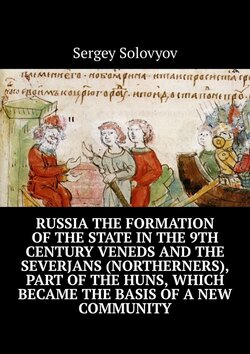Читать книгу Russia the formation of the state in the 9th century Veneds and the severjans (northerners), part of the Huns, which became the basis of a new community - Сергей Соловьёв - Страница 3
Geography
ОглавлениеThe very place of formation of the Slavic ethnos amazes the imagination – from the Ob River, according to “Guestrovskaya Ode” and “The Legend of Slaven and Ruse” to the Oder in the west, the Baltic Sea and the Danube. Deep rivers flow through this vast territory, which in themselves served as an obstacle to the migration of people – the Volga, Don, Dnieper, Prut, Vistula, Dvina, Danube, Elbe and Oder. As you can see, the wave of migration of the ancestors of the Slavs in ancient times was so powerful and irresistible that the tribes of the ancestors of the Slavs were able to cross these obstacles and settle over a vast territory.
This area belongs to the temperate zone, with a pronounced change in climate in winter and summer. The abundance of industrial wood made it the most common material for the craft – houses, dishes, fortified areas were built from wood, and due to the abundance of material, it was not too expensive. The downside was the frequent fires that destroyed buildings. Also, monuments and buildings made of wood are poorly preserved in the ground, often leaving only ramparts and ditches that have drifted from time to time. However, recently, researchers have learned to apply the analysis of images from space or resort to the help of aviation.
The abundance of water sources has always helped agriculture, and farming and cattle breeding. Harvests, at that distant time, of course, were not as plentiful as in Mesopotamia and Egypt. It rains regularly, and although there are droughts, they are not decisive, as there are no desert areas. However, excluding the Urals, these lands are relatively poor in copper deposits, which was important in ancient times, but the Baltic states had amber, which for many thousands of years became the basis of exchange. The culture of clay processing – ceramic production – was developed, and it was also very peculiar. In general, ceramics is one of the most important indicators of different cultures, making it possible to judge their similarities and differences. In the Volga-Don basin, such a source of exchange could only be grain and valuable fur raw materials obtained from the North and Siberia, as well as honey and wax. The ancestors of the Slavs also domesticated cattle, using cows, sheep, goats in the economy.
It may seem strange, but before domesticating horses on the farm, especially in the Northern regions, moose were used as a draft force. From agricultural products, cereals are known, cabbage, beets and carrots early came into the life of the ancestors of the Slavs, like apples. Judging by the references in the songs, grapes were also grown. Fishing was also an important craft, often replacing and supplementing bread in case of crop failures, and consequently, shipbuilding developed, which was so original that it is difficult to believe now – the boats were not knocked down by nails, but were sewn together by attaching boards to the ship’s frame. Even earlier vessels were leather, with a skin made of animal skin.
